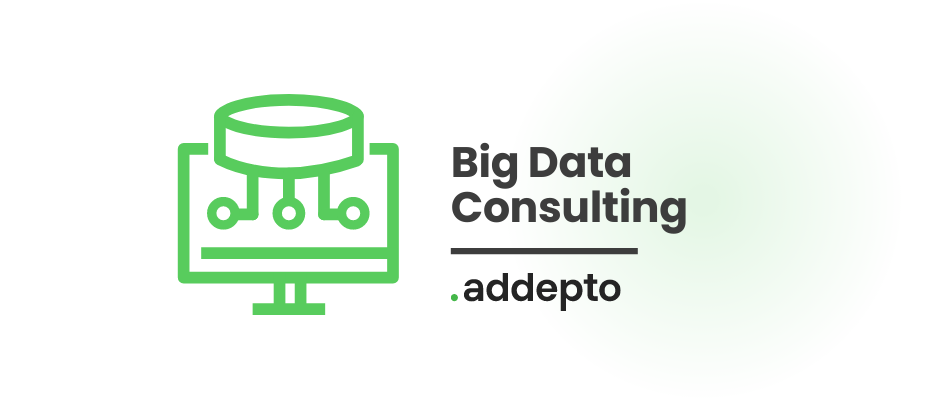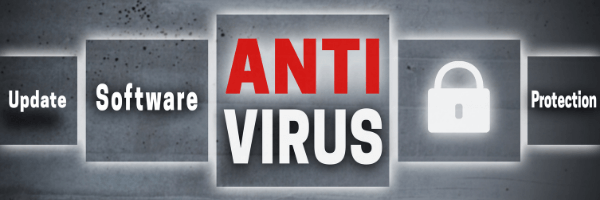
February 25, 2021
Big Data Security Issues and Challenges
Author:

CSO & Co-Founder
Reading time:
15 minutes
We write about big data on our blog almost every month. And no wonder this discipline is critical when it comes to AI and many related technologies. The whole data science and machine learning rely on big data. However, what we have not talked about so far, is big data security. What are the big data privacy and security challenges? And what big data security issues should you be especially concerned about?
Well, let’s find out!

When we talk about big data privacy and security challenges, there’s quite a lot going on. Every month there are new cyberattacks and new breaching techniques that get cybersecurity professionals to scratch their heads. Many of these attacks are tailored to steal financial data, while others are focused on stealing a company’s know-how and personal data. That’s why you have to defend yourself, and this is where big data security comes into play.
Big data security issues
When we talk about big data security, we have to treat this subject broadly. Therefore, by big data security, we mean all the measures, tools, and techniques that your company can use in order to protect big data in your company. Of course, when it comes to big data, you should focus on all the processes that happen within it, both in cloud and on-premises (attacks and other big data security issues can happen off-line as well!).
Big data security challenges: types of cyberattacks
There are at least several popular types of attack, but let’s analyze three of the most popular ones.

The first type of attack happens via malware when you download and install a hacked application with malicious code. In this scenario, you (unwillingly, of course) invite the virus into your device. Afterwards, you are at the mercy of your attacker. For example, they can steal big data from the device or the entire IT infrastructure or block access to it. There are also other forms of cyberattacks:
Phishing
Typically, this attack happens through text messages that lure internet users into revealing their personal data. For instance, you could download an app requesting that you call a specific phone number or go to a specific URL in order to ‘receive your award’ or ‘get a fantastic free package’. When you do, the hacker gets instant access to your data.
MITM (Man-In-The-Middle)
This attack happens when the attacker hacks and alters the communication between two users. The hacker can select the entire network or just the specific device to launch the MITM attack. What can this type of attack be used for?
- Eavesdropping
- E-mail/SMS hijacking
- DNS spoofing
- Redirecting web traffic

What are other common types of cyberattacks? We can show you five of the most common forms:
- Denial-of-service (DoS) and distributed denial-of-service (DDoS)
- Phishing
- Password attack
- SQL injection
- Cross-site scripting (XSS), and several others
Big data security challenges
For obvious reasons, cyber threats are becoming more and more prevalent. The more devices are there, the more internet users, the more cyberattacks we can expect. Currently, the number of devices connected to the internet is counted in billions. But that’s just partly the reason why big data security is of paramount importance today.
The second reason is that many big data tools and solutions are open-source. This means that, on the one hand, your company can use them freely, but on the other, they were not designed with security in mind as a primary function. This means these open-source apps and software can be vulnerable to many different attacks. And it goes further!
Today, more and more companies use open-source CMS platforms (yes, WordPress, we’re talking about you!) that are also prone to cyberattacks, such as ransomware, XSS Attacks or DDoS attacks that could damage your website and big data associated with it (customer data, payment details, financial records…).

Security Issues
If you want to defend yourself effectively, you have to know all the security issues and challenges that pose a threat to your big data security. And, actually, the list of such big data challenges and threats is quite long. Let’s take a look at it:
Third-party apps and byod
Remember when we told you that many open-source platforms are not resistant to cyberattacks? The same rule applies to all the third-party apps that you use in your company. And it goes further, as many IT frameworks have similar problems. If your company works with at least one web/dev/ML framework or a third-party app, find out its protection systems and how they can be improved. You should especially run these checks if the apps in question are in any way connected with your big data infrastructure or systems.
And what about BYOD? If you’ve never heard this abbreviation, it stands for Bring Your Own Device. In short, it’s an IT policy that’s more and more common in corporations and enables (sometimes encourages even!) employees to access corporate big data and IT systems using their own devices such as smartphones, tablets, and laptops.
And while it sounds like a convenient solution, from the big data security point of view, it can be a direct gateway for hackers to get into your IT systems and steal or damage your big data. If your company operates on this BYOD mode, make sure every single device that has access to your big data is properly protected with a first-class antivirus for business.

Fake data
Sometimes hackers might want to break into your databases and replace your big data with so-called fake data. It can be a serious threat. Imagine a financial company that has been attacked with this fake data attack, and now they are unable to identify any frauds. Why? Simply because they get false flags and false alerts!
And another example–a manufacturing company. Just imagine what could have happened if your real measurements had been replaced with fake ones. Your devices could get a false temperature report, resulting in a severe malfunction.
Access control
Here’s another significant challenge you have to have in mind constantly. Today, modern IT systems allow a specified access control. This means that you can give specific rights and roles to specific employees in your company. And yes, on the one hand, that’s the right solution.
If everyone had access to everything in your company, a huge mess would knock at your door. We believe it’s immensely important to design IT systems with encrypted authentication and validation procedures so that users are verified before they can implement any changes into the system or data it stores.

But there’s also the other side of this coin. Think about it; if only a few people at your company had access to the most protected dataset, it might take longer to notice a breach. And just to be clear, we’re not saying here that access control is a bad solution. We’re just pointing out what you should bear in mind when designing it.
Big data security challenges: security audits
You should bear in mind that cybersecurity is not something that is done once and for all. Think of it as a process of protecting your company from new threats. That’s why you should conduct regular security audits, verify your cyber defenses, and, at least from time to time, discover new solutions that can be implemented in your company.
Obviously, this means that you have to have the necessary know-how and an experienced team capable of conducting such audits and enhancing your cyber defenses. If you don’t have such experts in your team, it’s a good moment to think about outsourcing. There are many companies and agencies specialized in cybersecurity. They will help you!

Real-time security compliance
Today, solutions and apps that work in real-time are prevalent. The same rule applies to big data security. And while real-time big data analytics is a great nice-to-have option that helps you make the most from big data in your company, you ought to consider real-time big data security as well.
And yes, that’s a solution only for the biggest players (again, for example, financial companies), primarily because it entails many costs and complications, especially at the beginning. But keep in mind that there is something called real-time security compliance or real-time compliance monitoring.

Data provenance
This aspect of big data security challenges primarily concerns metadata (essentially, it’s data about data). With metadata, you can easily determine where that specific piece of data came from, who had access to it, or what has been done with it. Data provenance can be a huge advantage when it comes to analyzing past attacks and thinking about ways to protect your company from future ones.
Data storage
Finally, there’s a storage issue. Typically, companies store their big data in data warehouses and data lakes. These depositories also should be properly protected from any external attacks. And when it comes to data lake/warehouse security, the main methods you should focus on consist of:
- Role-based access control
- RLS (Row-Level Security)
- Server-enforced Virtual Private Database (VPD) access
- Encryption

Big data security technologies and solutions
Thankfully, you are not unarmed in this battle. There are many reliable security technologies that increase the security of your big data. Let’s analyze the common ones, starting with the most straightforward techniques:
Physical security
Usually, companies don’t think about physical security when it comes to cybersecurity issues, but that’s your starting point. Make sure you have reliable physical security and access control systems in your office/building that can deny access to a data center to strangers or staff members who have no authorization in the specific area. A trusted and trained security agency and video surveillance will also be extremely helpful.
Strong passwords
Make sure your passwords are long, not intuitive, and difficult. Don’t use simple, easy-to-remember, intuitive passwords. What you should do is use many special signs like !%&*. Some of the letters should be capitalized. And remember to add at least two digits. Take a look at what your passwords should look like:
- Weak password: MyCompany1
- Strong password: 45gt%$olAR
And another essential rule–make sure your passwords are frequently changed, at least three-four times a year. Strong and frequently changed passwords constitute your recipe for success.

2SV: Two-step vrification/authentification
The idea behind 2SV is to make sure the person who tries to log into your system is really this person and not some impostor or hacker. 2SV is common with instant payment platforms, and for a reason. For instance, PayPal[1] has their unique security keys. During the payment process, their authentication algorithms send you a one-time personal identification number, which is unique for each session.
Without this one-time code, you won’t be able to log into your account, even if you know the password. Typically, such codes or links are distributed via e-mails or text messages.
If that’s not enough, there’s also the 2FA (2-factor) authentication. This solution requires confirming a specific action through another device. Many banks utilize this solution. When you try to send money via your laptop, you have to confirm this action with your mobile device. You should think about something similar in your company!
Tthe SSL certificate
This certificate allows you to switch to a secure type of hosting. SSL enables high-level encryption, assuring that all the packages of data traveling via your website are encrypted; ergo, they are not visible to other users and cannot be intercepted. That’s not the only reason why you should implement the SSL certificate. It is also vital from your users’ perspective, as it protects their sensitive (primarily personal) information.

Encryption
The SSL certificate allows you to encrypt your data packages, but that’s not the only encryption solution available. You should also use other encryption tools that will secure your big data. Bear in mind that encryption mechanisms need to operate on many different types of data (both user and machine-generated) and different kinds of devices (both desktop and mobile ones). And finally, ensure that your encryption mechanisms work with common big data storage formats, that’s including:
- RDBMS (Relational DataBase Management Systems)
- No-SQL (Non-relational databases)
- Other specialized file systems and databases
Multi-layer/multi-level security
It’s a comprehensive approach to cybersecurity that assumes that your company should have protective systems that defend the company’s assets from various types of attacks. Simply put, you have different defense mechanisms that can comprise:
- Antivirus software and a firewall
- Data backups and loss prevention systems
- E-mail security
- Wi-Fi and LAN security
- Mobile devices security and other solutions.

Big data privacy and security challenges: Devise a strategy
In order to deal with all the big data security challenges and issues, you have to have a comprehensive strategy. And here, we hit the first obstacle–the lack of know-how. In 2018, Forbes[2] published a report that stated:
Fewer than 15% of respondent organizations have a Chief Data Officer, and only about 10% have a Chief Analytics Officer today.
Today, hopefully, the situation can look a bit better, but still, there’s a lot to do in this regard. If your company does not have one specific person that’s responsible for big data (and its safety), you’re in dire straits. We believe that especially large enterprises should hire a cybersecurity professional. If you don’t want to hire such a person full-time, or you don’t know how to hire such an expert, go for outsourcing and find a company that will help you with your cybersecurity challenges. It is vital to find a company that deals with these problems every day and constantly monitors the market in order to discover new potential threats.
With such a reliable partner, you can devise a data-centric security strategy. The best way to develop and build a big data safety strategy, but also the entire IT environment that addresses all the critical big data security issues, is to start with a roadmap. Think of devising a big data security strategy as of planning a road trip. You have to know where you currently are, where you want to get, and which route is optimal.
Therefore, you should ask yourself a few questions:
- What are our security and business goals?
- What are our big data security needs, threats, and potential holes?
- Which assets and resources in our company are essential to creating an effective strategy?
- What options do we have?
Naturally, you don’t have to answer all of these questions yourself. If you work with a trusted agency, they will help you find answers to these and other questions.

Who is responsible for big data security in your company?
In a word? Everyone! Although you should have an expert or external company that takes care of your big data security, bear in mind that all your employees should know your company’s IT regulations and stick to them. That’s the best way to ensure that everything is protected.
Of course, this way, you can’t avoid all of the cyber threats, but you can minimize the risk, and this is exactly what you should do! Secure your big data infrastructure from as many different threats as possible, and it will successfully serve your business for many years to come.
Implement a thorough big data security strategy
You now know a lot about big data security. You know what techniques are available and why you should be so concerned about your company’s security question. Now, it’s time to take the next step: Implement your brand-new big data security strategy. How can you do that?
In fact, there are several ways your organization can implement security measures to protect big data.
First of all, you can do it all by yourself, with your internal resources. Many companies choose this way–they hire a cybersecurity professional and work with them to build defense systems. Your second option is to opt for outsourcing and work with an external company that will help you implement all the safety measures and monitor their efficiency. Which way is better? There’s no one answer.
When you work with a full-time specialist, you are sure that they devote all their time to protect your company. The question is, what will happen when such a person decides to quit? Think about it. And what about outsourcing? Yes, an external company will most likely not be available 24/7 (although such an option is also possible, for a price), but in many instances, it’s better to work with a team of specialists instead of just one person.
Do a thorough research and select an option that will work best in your particular situation. Although Addepto is not a cybersecurity company, we work with big data every day, and we will gladly help you find a company that will take care of your big data security question.
If you have any additional questions or simply want to start using bug data in your company – drop us a line! We are at your service!
References
[1] Paypal.com. Email, encryption, and other protections. URL: https://www.paypal.com/us/webapps/mpp/security/security-protections . Accessed Feb 25, 2021.
[2] Louis Columbus. The State Of Business Intelligence, 2018. Jun 8, 2018. URL: https://www.forbes.com/sites/louiscolumbus/2018/06/08/the-state-of-business-intelligence-2018/?sh=38ad61507828. Accessed Feb 25, 2021.
Category:




